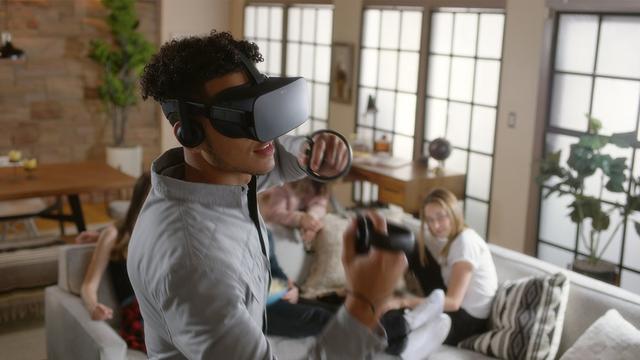According to the Digital Trends website, virtual reality has taken root, but it takes longer for mainstream consumers to accept it. Early signals of virtual reality being accepted by users outside gamers and early adopters have emerged, but these signals are not from powerful virtual reality heads such as HTC Vive and Oculus Rift, but from mobile virtual reality heads. Samsung Gear VR and Google Cardboard are the most popular virtual reality heads-up in the world.

Given the relative insufficiency of mobile virtual reality head-up processing capabilities, this is somewhat unbelievable. However, there are many examples in the history of science and technology: Software and hardware are accepted by mainstream consumers only after they are easily accessible to everyone. The emergence of home game consoles makes it possible for people to play games without going to the game hall, and the gaming industry has ushered in a great development; smart phones have really succeeded when they become electronic products that are large and beautifully designed like the iPhone.
Virtual reality will also be like this. Although users can already use virtual reality technology at home, related manufacturers need to go further in terms of ease of use until the grandmother users can easily use it. The best connection to the virtual reality headlamps is now dazzling. This limits the scope of its use, but more importantly, it makes the virtual reality head difficult to use. The advantages of wireless technology are not only freedom but also ease of use.
Why can wireless bring freedom to users?
At the International Consumer Electronics Show, TPCast demonstrated a system that would remove the HTC Vive "big sister." Oculus has developed a prototype virtual reality product that is completely free from the constraints of the connection.
TPCast's wireless VR products are scheduled to be marketed this year. Rift will enable users to get rid of the PC once and for all. The future of wireless virtual reality seems to be within reach.
Digital Trends said that there is no need to worry about connecting to improve user immersion. For users at the forefront of virtual reality games, this is the most exciting part of TPCast. For casual users, this is just a cabaret show - add wireless technology has greatly improved the ease of use of virtual reality heads.
When completely freed from the shackles of reality, the range of user activity is no longer limited by the connection. The user does not need to worry about dragging the cable behind himself, and there is no need to worry about how many times he has turned and to avoid tangling the wire around his feet. Users no longer have to worry about whether there are enough USB ports on the PC or which interface to plug in.
Wireless virtual reality technology also makes it easier for others, animals, or children to be active in the space where wireless virtual reality users are located.
These seem to be only minor advances compared to the significant advances in the field of virtual reality in recent years, but they are essential for home users.
Lay the foundation for the future
Digital Trends said that with the advancement of virtual reality technology, the advantages of wireless technology will become increasingly prominent. For example, if you are still connected to your PC through a clunky connection, it would not make sense to develop a simple virtual reality head-up like sunglasses. With the integration of wireless connectivity and Inside-out tracking technology, the potential of virtual reality technology will burst out.
However, if the two lack one of them, any kind of technology has no such great power. The availability of both (or more) technologies is a necessary condition for virtual reality to become a mainstream technology.
Before becoming the mainstream technology that everyone has, the smart phone and its predecessor, PDA (Personal Digital Assistant), have been available for more than 10 years.
Before people realize the benefits of carrying a powerful computer in their pockets, smartphones have smaller, brighter, and larger screens, longer battery life, and new software.
However, the most important possibility is wireless connection. Palm Pilots are very useful, but letting them sync data with other devices is a big pain point. Synchronizing data means using connections and more software.
Although a technology may be welcomed by users, it must not be too complicated to attract users to purchase. The PDA feature will appeal to all users only if they can access the network wirelessly anywhere.
Virtual reality technology is similar to PDAs. We need software, infrastructure, support, but the most important thing is wireless connectivity. What it needs is not just amazing like first-generation technology. Virtual reality technology must be simple and easy to use.
The wireless head has taken a step closer to this goal.
British Wall Switch And Socket
Wenzhou Niuniu Electric Co., Ltd. , https://www.anmuxisocket.com
